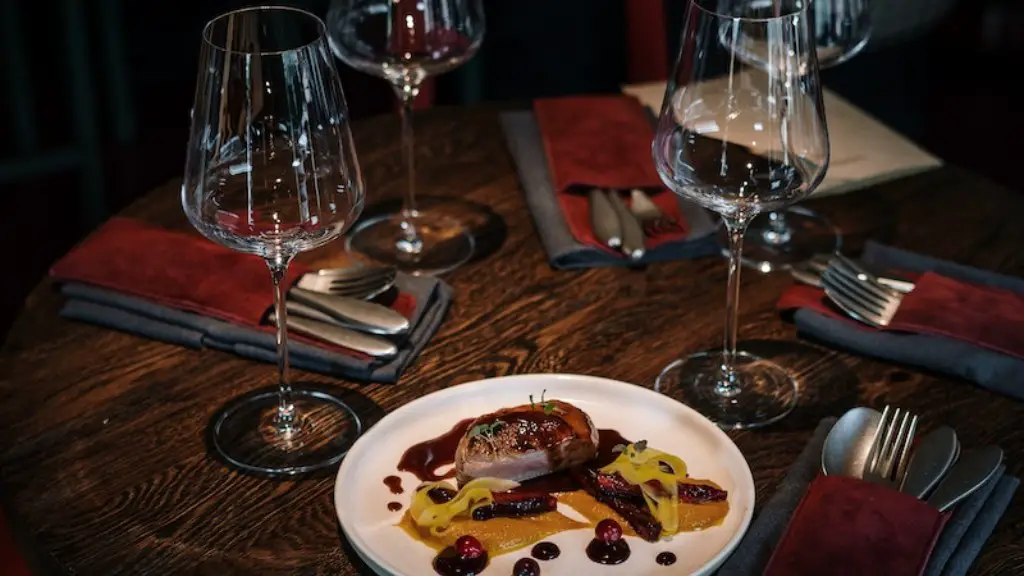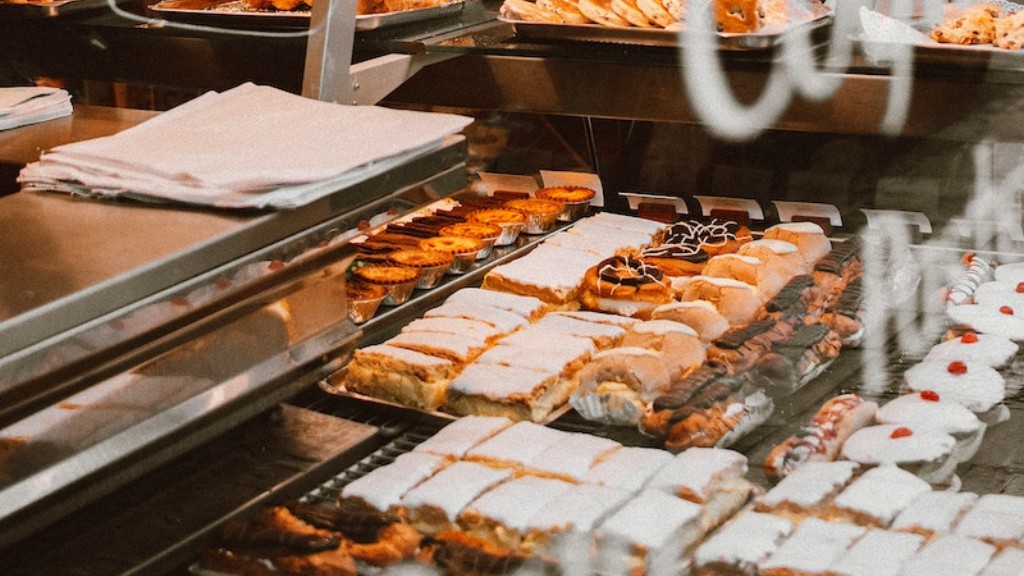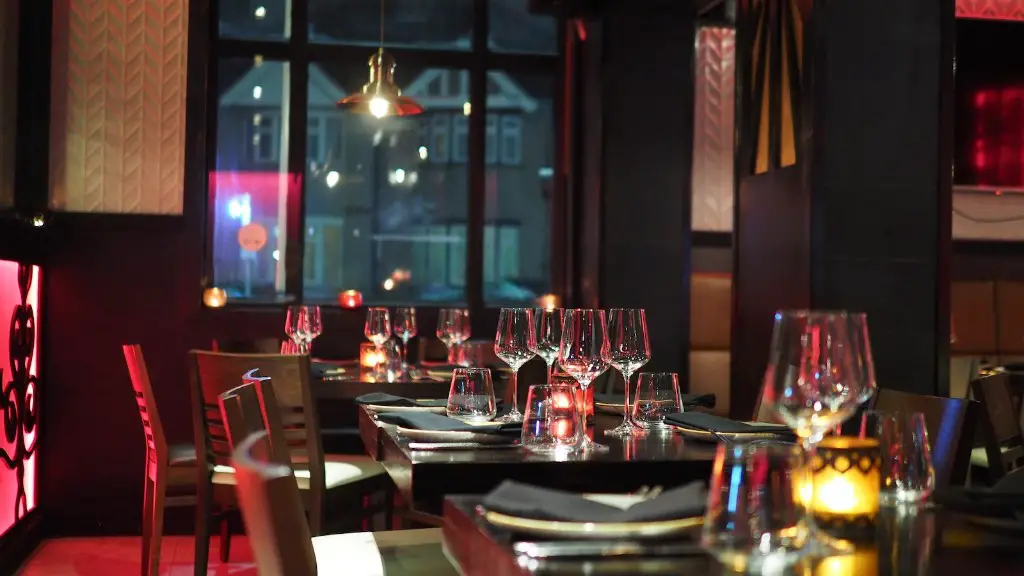Opening a restaurant takes significant capital. How much you need depends on the concept, the location, and other factors. But you can expect to need at least a few hundred thousand dollars to get started. This is just for the initial investment; you will also need to have money available to cover the ongoing costs of running the business. Before you take the plunge, be sure to do your homework and understand the true cost of starting and maintaining a restaurant.
The amount of capital you will need to open a restaurant will vary depending on the type of restaurant you want to open, the size of the restaurant, and the location. A fast food restaurant will require less capital than a fine dining restaurant. A small restaurant will require less capital than a large restaurant. A restaurant in a small town will require less capital than a restaurant in a large city.
How much capital does a restaurant need?
Opening a restaurant is a costly endeavor, but there are ways to reduce the startup costs. One way is to use the ghost kitchen method, which allows you to cook food in a shared space without the need for a brick-and-mortar location. This can help you save on rent, utilities, and other expenses. Another way to reduce costs is to be strategic about your menu and choose items that are relatively inexpensive to prepare. By being mindful of your costs, you can open a successful restaurant without breaking the bank.
Opening a restaurant is a huge undertaking. Not only do you need to come up with the menu, find a location, and hire staff, but you also need to make sure you have the financial backing to get everything off the ground.
The average restaurant startup cost is $275,000 or $3,046 per seat for a leased building. Bump that up to $425,000 or $3,734 per seat—if you want to own the building.
Our restaurant startup cost checklist breaks down all the costs you’ll need to consider to make your dream a reality. From the initial investment to ongoing costs like marketing and supplies, this list will help you plan and budget for your new restaurant.
How much does it cost to own a small restaurant
There are a number of factors that can affect the overall cost of opening a restaurant in 2021. Depending on your location, equipment, furniture, and rent, the average startup cost can range from as little as $175,000 to well over $700,000. Keep in mind that these costs can vary greatly depending on the type of restaurant you plan to open.
Restaurants can be good investments, but they have a high rate of failure within the first five years, making them a high-risk investment. If you must invest in a restaurant, choose an established one (ideally a franchise) and study the financials before signing on the dotted line.
Can restaurant owners make a lot of money?
As a restaurant owner, your salary will depend on a number of factors, including the location, size, and offerings of your restaurant, as well as any additional amenities you may provide. On average, you can expect to earn anywhere from $33,000 to $155,000 per year.
Labor costs can have a big impact on your restaurant’s bottom line. Make sure you are aware of all the associated costs beyond just hourly wages and salaries. These can include payroll taxes, overtime, bonuses, vacation pay, sick days, and employee benefits. By understanding all the factors that go into labor costs, you can better control them and keep your restaurant profitable.
Can you start a small restaurant with 10000 dollars?
The startup costs for a ghost kitchen can range depending on the location. Some areas may have options for a ghost kitchen that are below $10,000, while in other areas, the startup costs may be closer to $50,000. It is important to do research on the costs in the specific area where the ghost kitchen will be located.
If you are looking to acquire an existing restaurant, you may be able to do so for much less than the cost of building out a new one. This will largely depend on the financials of the restaurant you are looking at. Franchise websites will typically provide information on how much it will cost to build a new location from scratch.
What is the most profitable restaurant to own
There are a few types of restaurants that tend to be more profitable than others. Bars typically have the highest profit margins, followed by diners and food trucks. Delivery pizzerias and pasta restaurants also tend to be quite profitable. The key to success in the restaurant business is to find a niche and to excel at it. By offering great service and high-quality food, you can be successful no matter what type of restaurant you own.
If you want to make a profit in the restaurant business, you should aim for a margin of 2-6%. This will vary depending on your costs and other factors. To increase your profit margins, you can either lower your overheads or increase your revenue. In the first year, the average restaurant makes around $112,000 per month.
What type of restaurant is more profitable?
Fine dining restaurants are one of the most profitable restaurant types. They offer an upscale experience that diners are willing to pay a premium for. There are many factors that go into making a fine dining restaurant successful. Some of the most important factors include the quality of the food, the ambiance of the restaurant, and the level of service.
To be successful, fine dining restaurants must provide an exceptional dining experience that diners are willing to pay a premium for. The quality of the food is the most important factor in determining the success of a fine dining restaurant. The food must be of the highest quality and must be prepared correctly. In addition, the restaurant must have a pleasing ambiance. The atmosphere should be relaxing and inviting. The level of service must be high in order to create a memorable dining experience.
It’s no secret that running a successful restaurant is incredibly difficult. In fact, the failure rate for restaurants is incredibly high, with 60% of restaurants failing in their first year and 80% of restaurants failing within four years.
There are a number of reasons why restaurants fail, but often it is because they areIgnoring warning signs that their business is in trouble, or making a variety of mistakes.
If you’re thinking of opening a restaurant, it’s important to be aware of the potential pitfalls and to do everything you can to avoid them. With careful planning and execution, you can give your restaurant the best chance of success.
What is a person who owns a restaurant called
A restaurateur is a highly skilled professional who is proficient in all aspects of the restaurant business. He or she is responsible for the day-to-day operations of a restaurant, including the selection of menu items, the supervision of staff, and the maintenance of a high standard of customer service. A restaurateur must also have a keen eye for detail in order to ensure that the restaurant runs smoothly and efficiently.
There are several ways that restaurant owners can get paid, including a regular salary, a portion of the restaurant’s overall profits, or a combination of both. In some cases, restaurant owners may also receive dividends from business profits. Whatever the method of compensation, it is important for restaurant owners to maintain a consistent level of income in order to keep their business running smoothly.
Do small restaurant owners make money?
Payscale.com and Chron.com both estimate that restaurant owners make anywhere from $29,000 to $153,000 per year. The national average is around $65,000 a year, according to Payscale.com. Chron.com estimates a similar range.
Yes, restaurants are profitable, but they have low profit margins. Profitability depends on many factors including the size and type of restaurant, as well as economic ones. It takes an average of two years for a new restaurant to turn a profit.
What are 4 types of costs a restaurant can have
There are four main groups of costs that cut into a restaurant’s bottom line: food cost, liquor cost, labor cost, and operational cost. Here are some tips on how to manage these costs:
1. Keep a close eye on your food cost. This includes both the cost of the ingredients you use and the cost of waste.
2. Liquor cost can be managed by carefully controlling the amount of liquor you use and by negotiating with suppliers for better rates.
3. Labor cost is often the largest expense for a restaurant, so it is important to carefully manage staffing levels. Make sure you are not overstaffed and that your staff is properly trained and efficient.
4. Operational cost includes things like rent, utilities, and insurance. These costs can be controlled by shopping around for better rates and by negotiating with vendors.
As a restaurant owner, it’s important to be aware of your overhead costs and how they can impact your business. The two largest expense categories for most restaurants are labor and food and beverage costs. Food and beverage costs are typically categorized as the cost of sales on financial statements.
Labor costs can be one of the biggest challenges for restaurants to control. Many restaurants operate on slim profit margins, so even a small increase in labor costs can have a big impact on the bottom line. There are a number of ways to try to control labor costs, such as monitoring employee hours, implementing efficiency measures, and offering incentives for employees to work more efficiently.
Food and beverage costs are also a major expense for restaurants. Again, because profit margins are often slim, it’s important to try to control these costs as much as possible. One way to do this is to purchase in bulk, which can often get you a discount from suppliers. Another way to control food and beverage costs is to monitor portion sizes and to make sure that any food that is not used is properly stored and not wasted.
Restaurants are businesses with high overhead costs and a high potential for waste. By being aware of these expenses and taking steps to control them, you can help to
Warp Up
The amount of capital you will need to open a restaurant depends on the size and type of restaurant you wish to open. A small, fast-food restaurant may cost as little as $100,000 to open, while a large, full-service restaurant could cost upwards of $1,000,000.
You will need to have access to a significant amount of capital in order to open a restaurant. This is because there are numerous expenses that are associated with starting and running a restaurant business. These expenses can range from the cost of leasing or purchasing a commercial space, to the cost of purchasing equipment and supplies, to the cost of hiring staff. If you do not have access to a large amount of capital, you may need to consider finding a partner or investors who are willing to provide the necessary funding.





